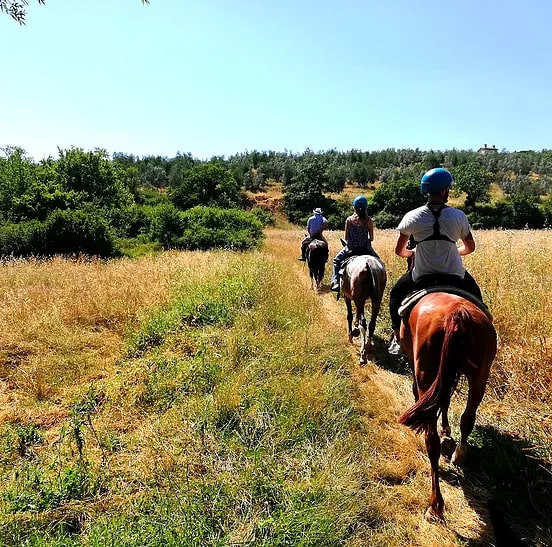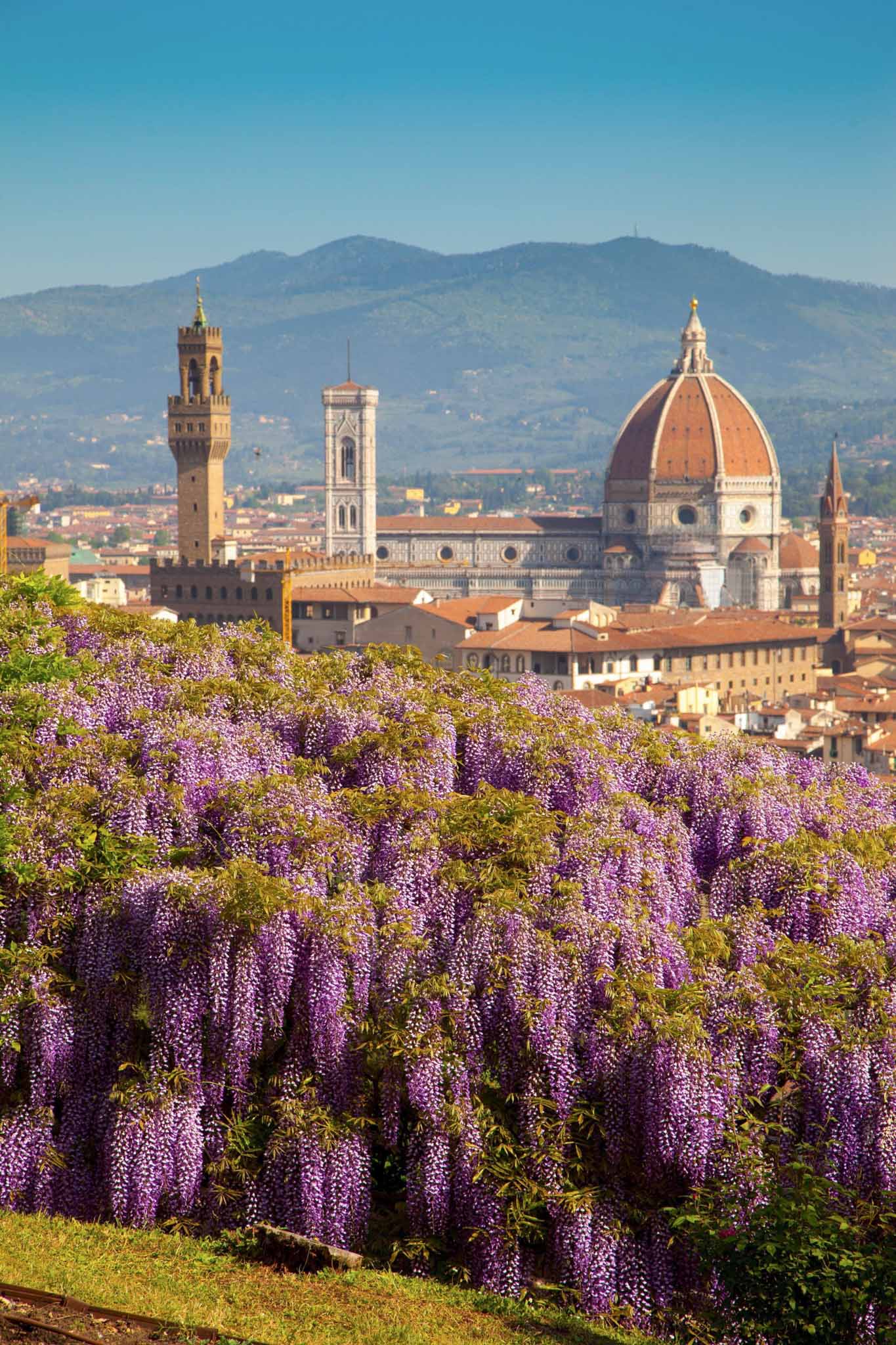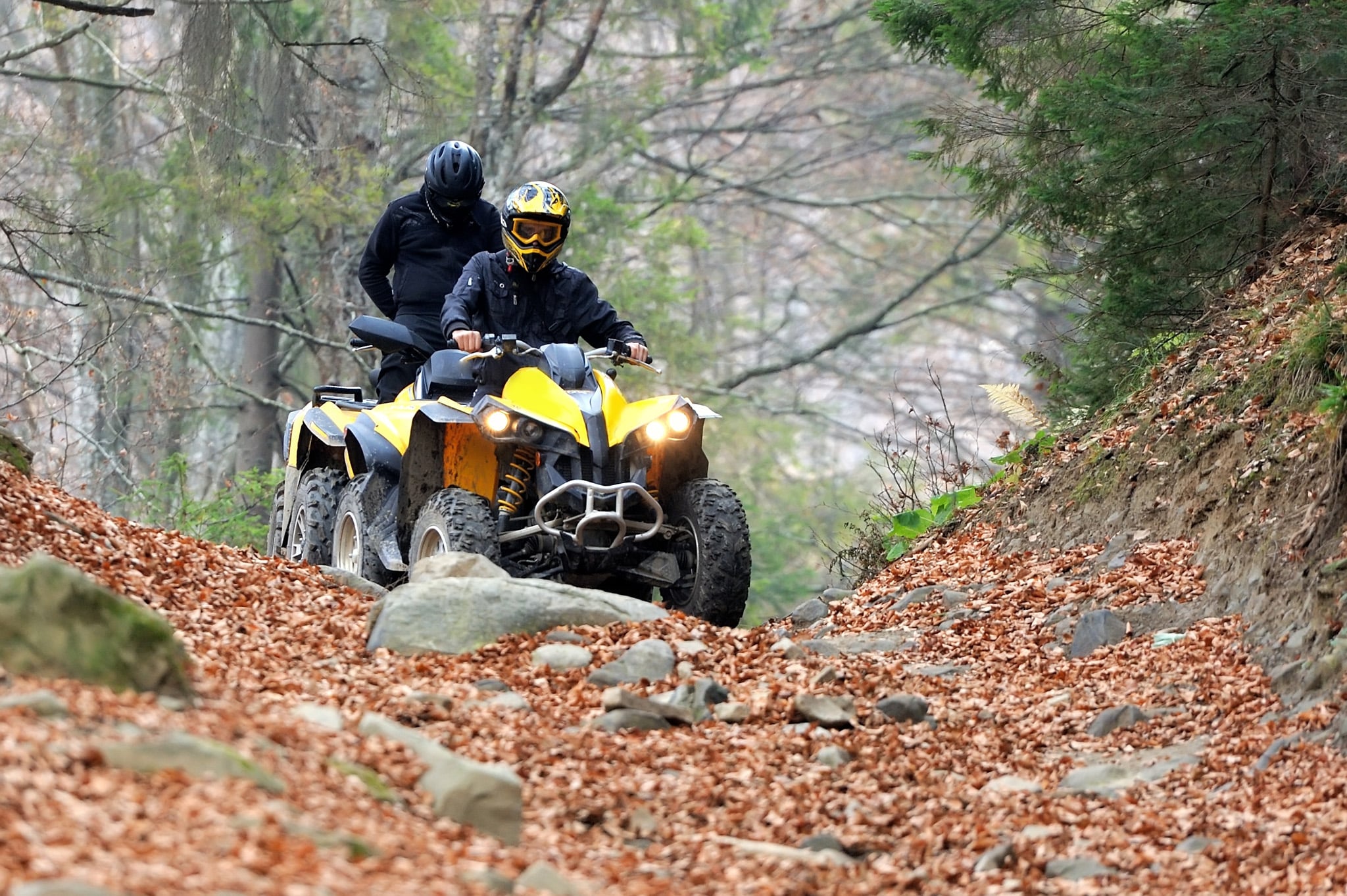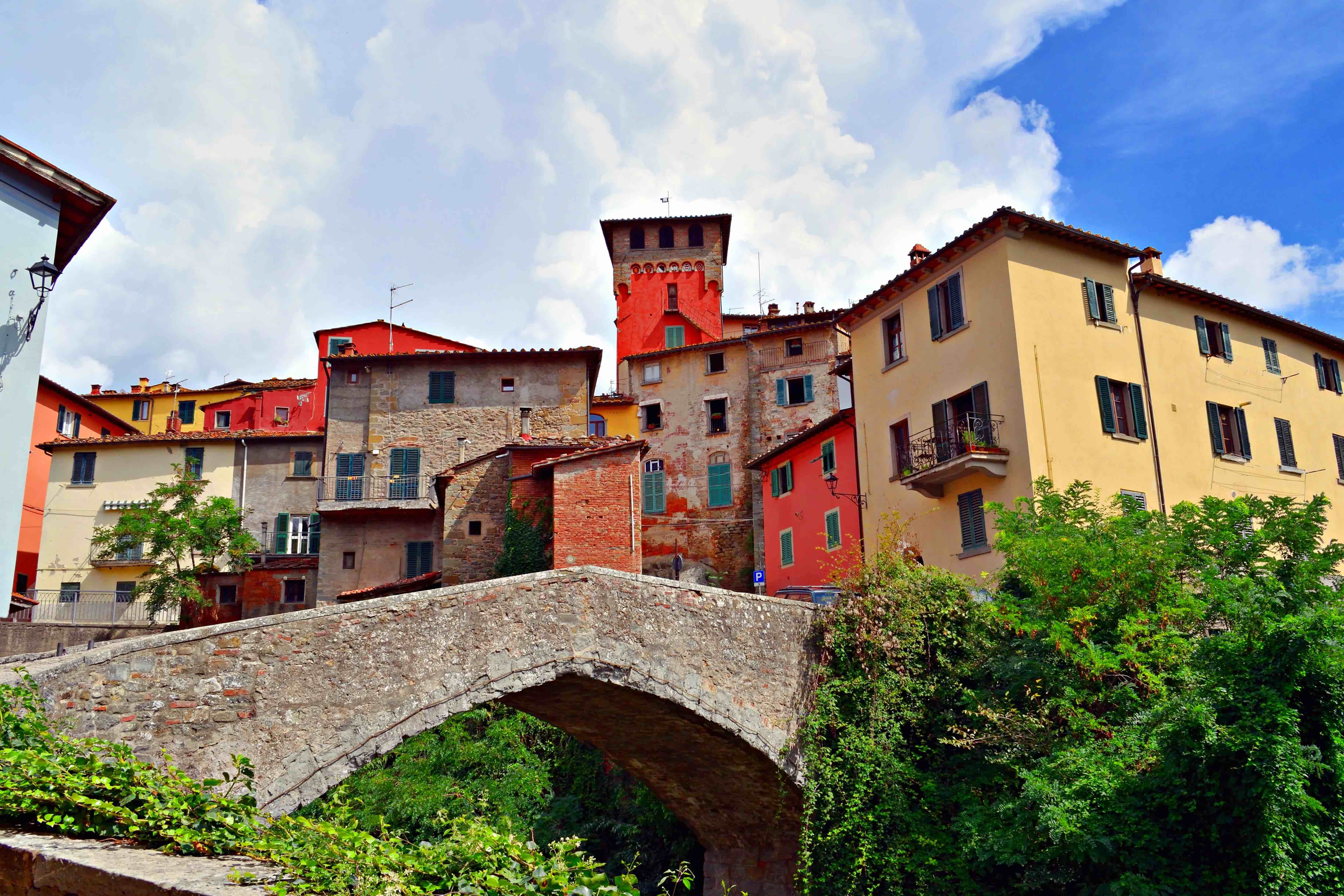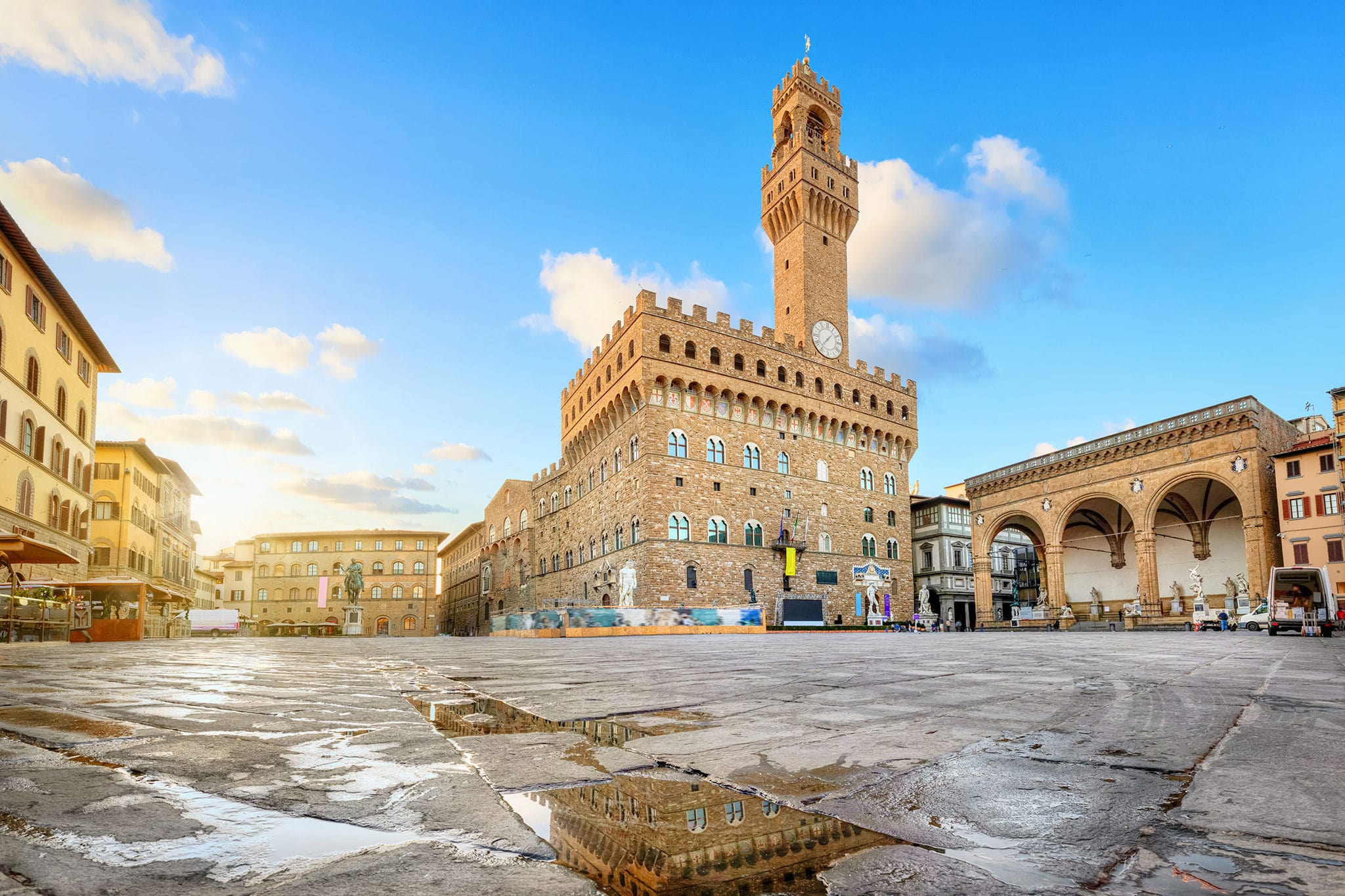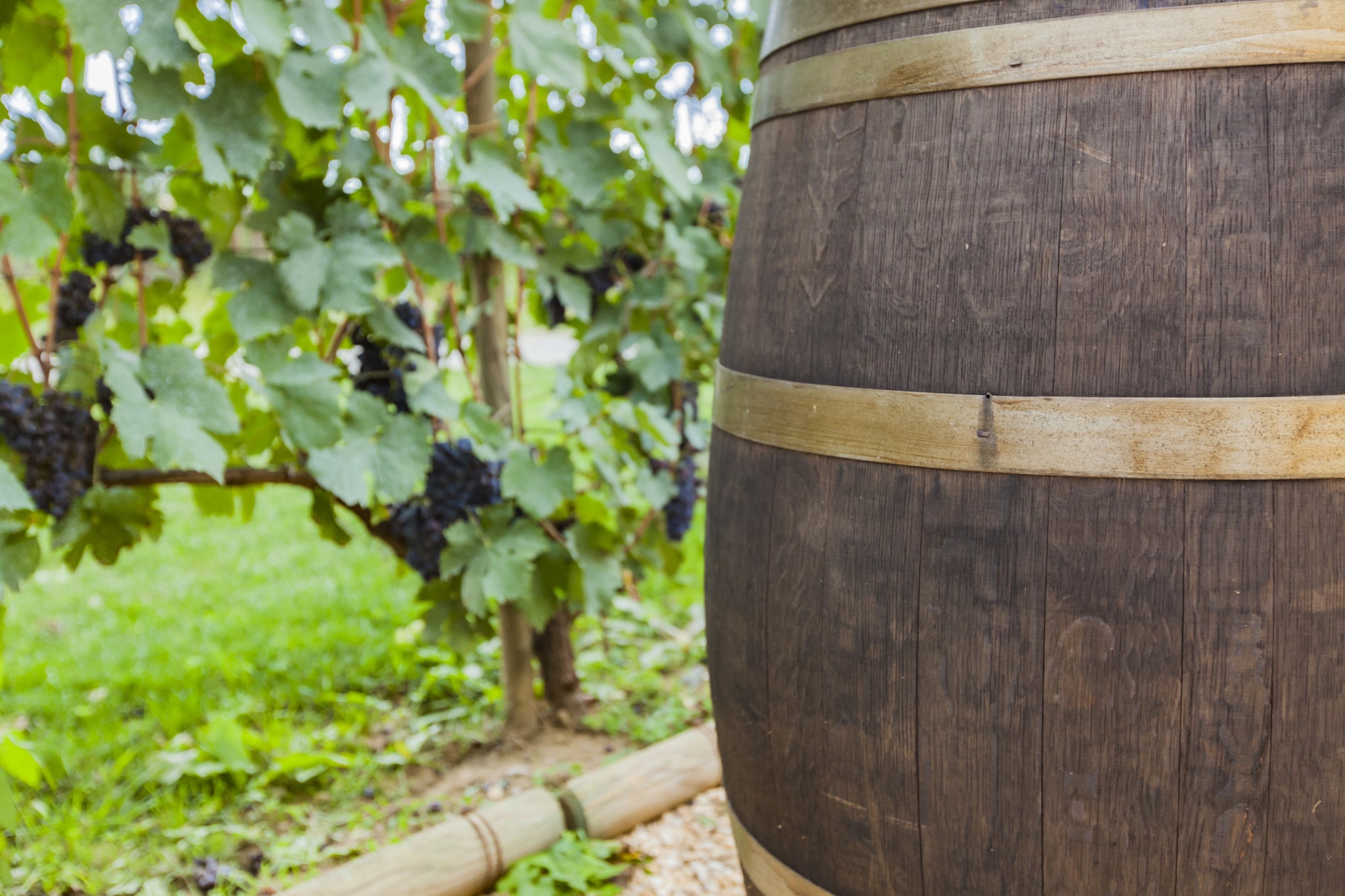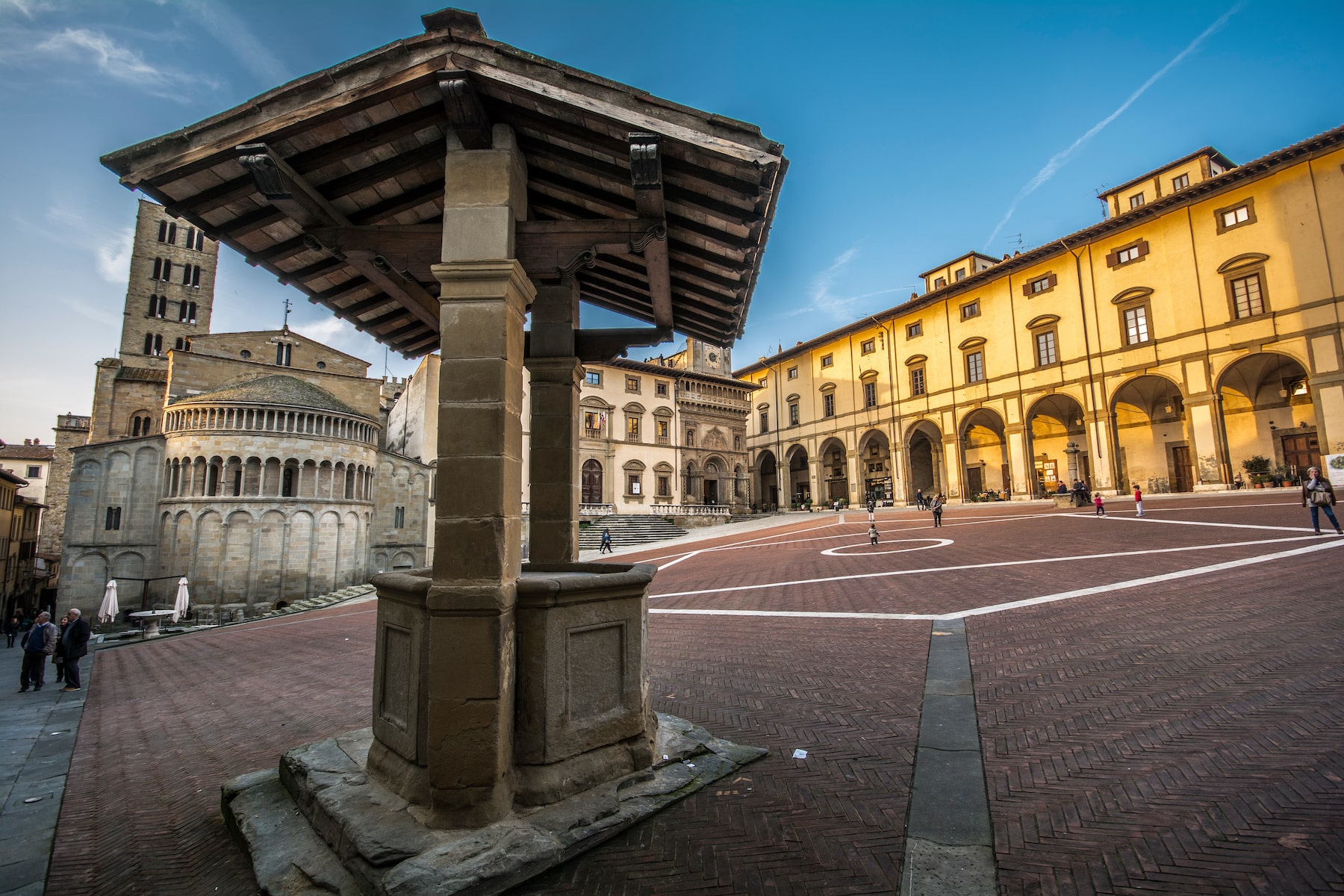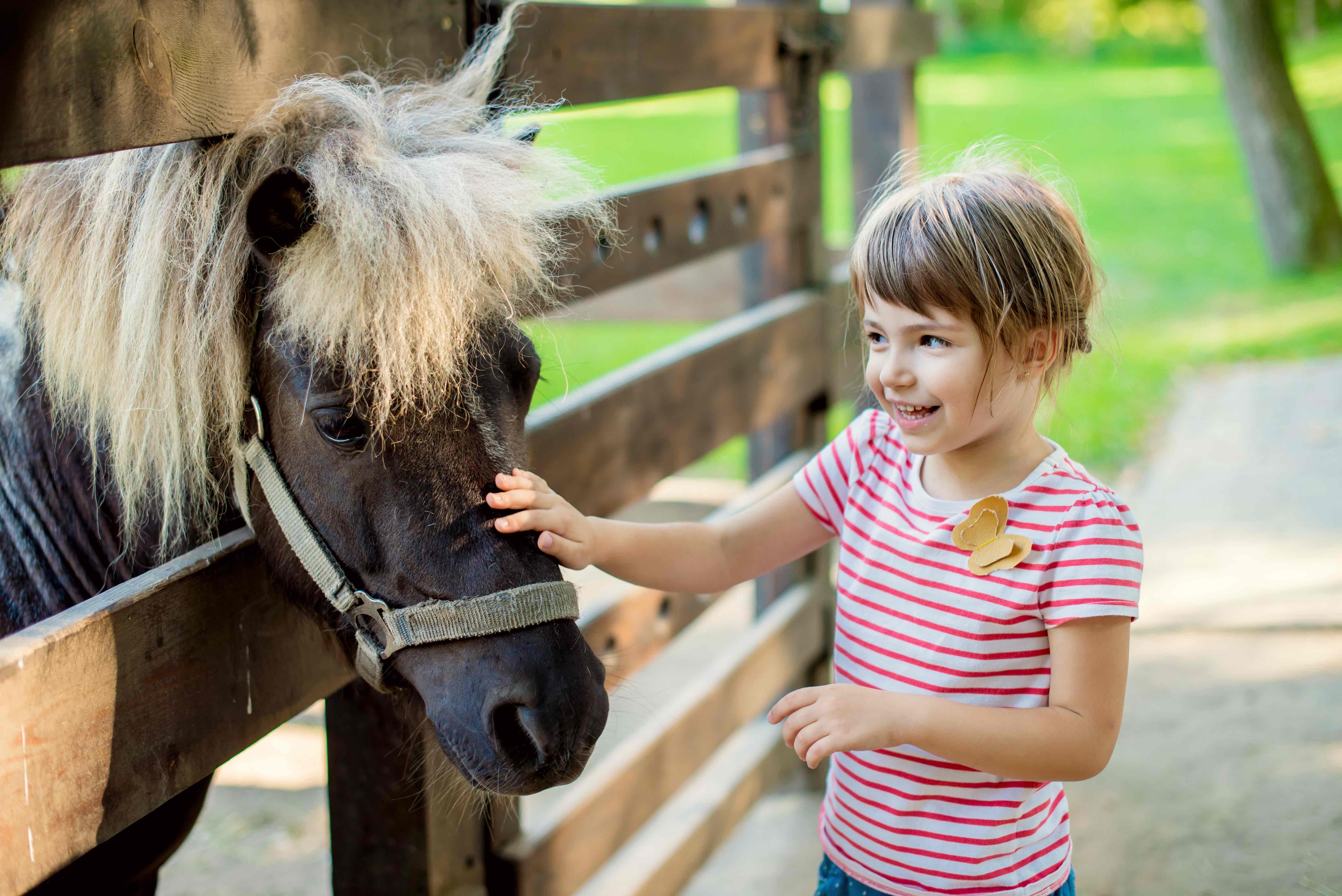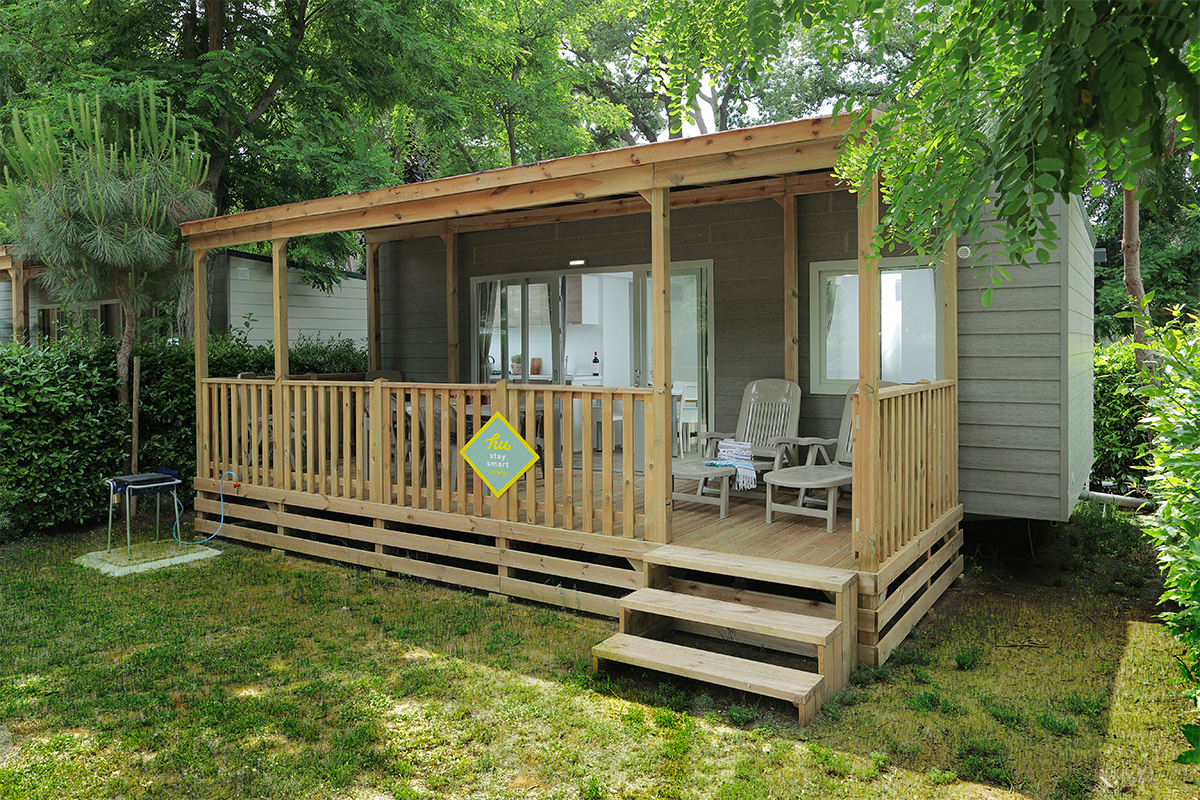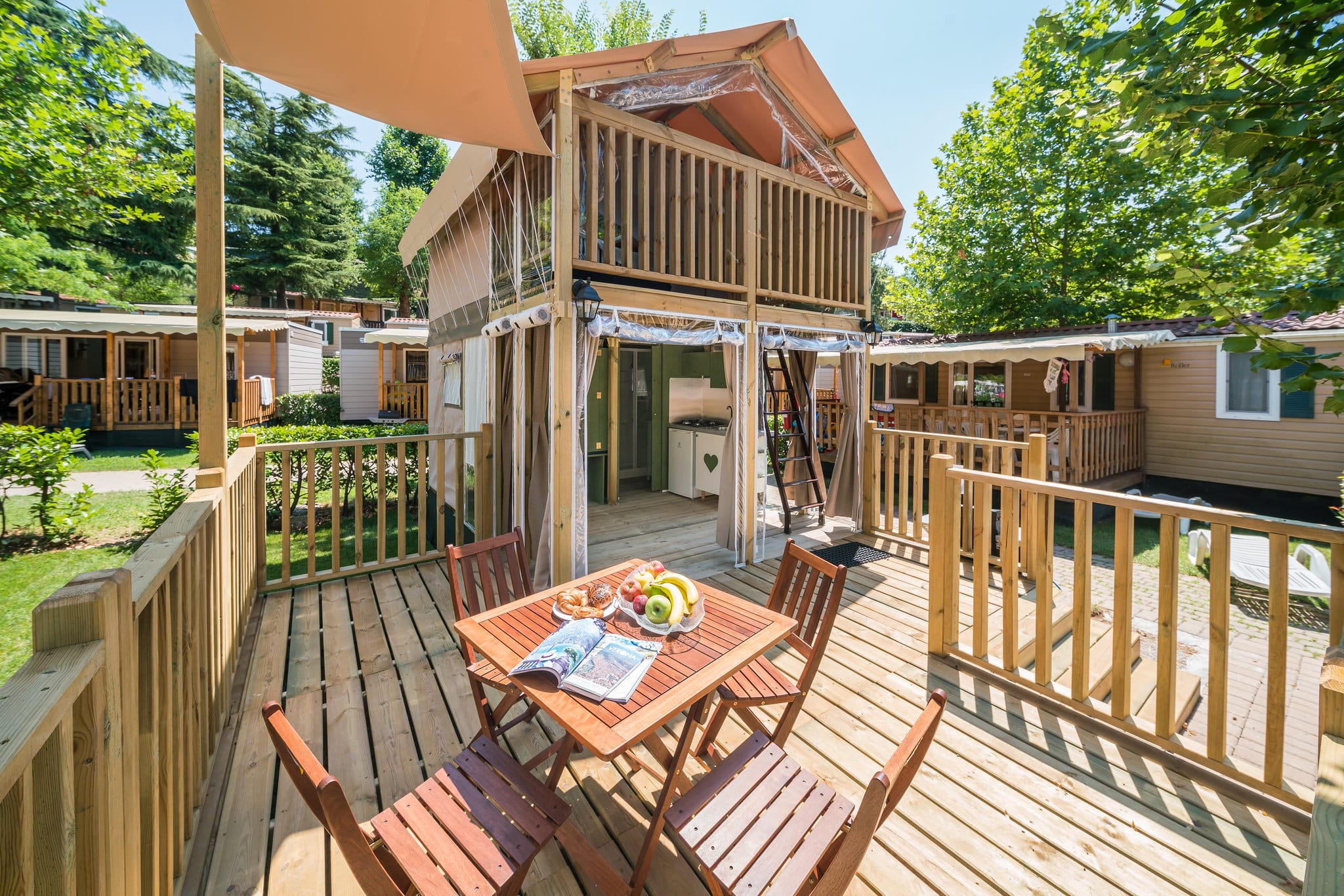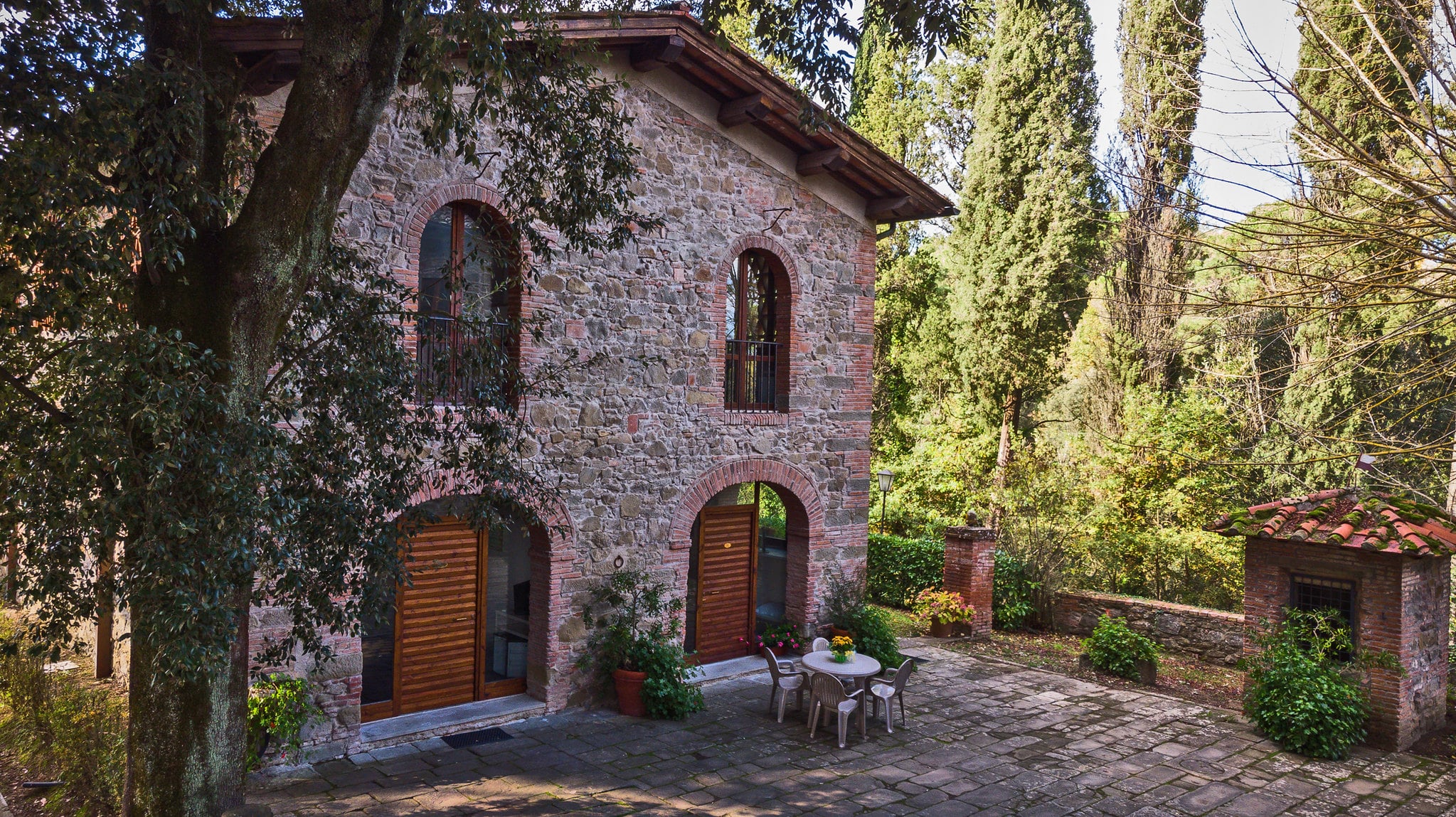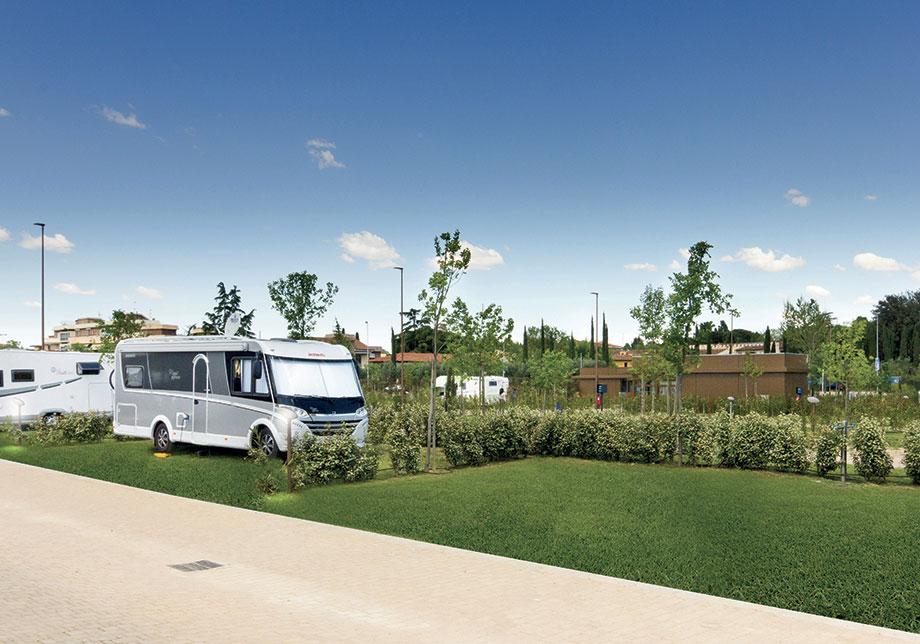The secrets of the Valdarno
Just step outside the village and you’ll be amazed by all that the Valdarno has to offer. This valley, carved out by the Arno river, is a patchwork of landscapes that truly captures the spirit of Tuscany: rolling hills dotted with farmhouses, an outstanding artistic heritage, fine vineyards and exceptional culinary traditions. You can explore it on foot, on horseback or by bike. The area is cradled by the Pratomagno massif to the north and the Chianti hills to the south, and is full of hidden gems: untouched nature reserves, medieval villages, romantic Romanesque churches and the spectacular Balze.
One of the most charming towns here is Montevarchi. Stop to admire the Collegiate Church of San Lorenzo, which houses the relic of the Sacred Milk – said to be the milk with which Mary nursed Jesus. Don’t miss the Palaeontological Museum with its Southern mammoth skull, or the elegant Art Nouveau Villa Masini, a filming location for Life is Beautiful. For local produce, head to Il Mercatale, one of Tuscany’s first covered farmers’ markets.
Continue to San Giovanni Valdarno, Masaccio’s birthplace. Stroll through Piazza Cavour, Piazza Masaccio and admire the scenic Palazzo Pretorio, the Museo delle Terre Nuove, the Basilica Museum and Casa Masaccio.
And if you’re into wild landscapes, the Valdarno has its very own movie setting too: the Balze, rocky pinnacles carved by water erosion. Drive along the SP85 “Sette Ponti”, especially near Castelfranco Piandiscò, or the SP8 from San Giovanni Valdarno. The most stunning view? From the nearby hamlet of Piantravigne. There’s even a circular trail – the Sentiero dell’Acqua Zolfina, starting from Castelfranco Piandiscò. And don’t skip Loro Ciuffenna, a village with an ancient mill along the Via dei Setteponti, with its ancient mill and the beautiful San Pietro a Gropina, the most important Romanesque church in the area.
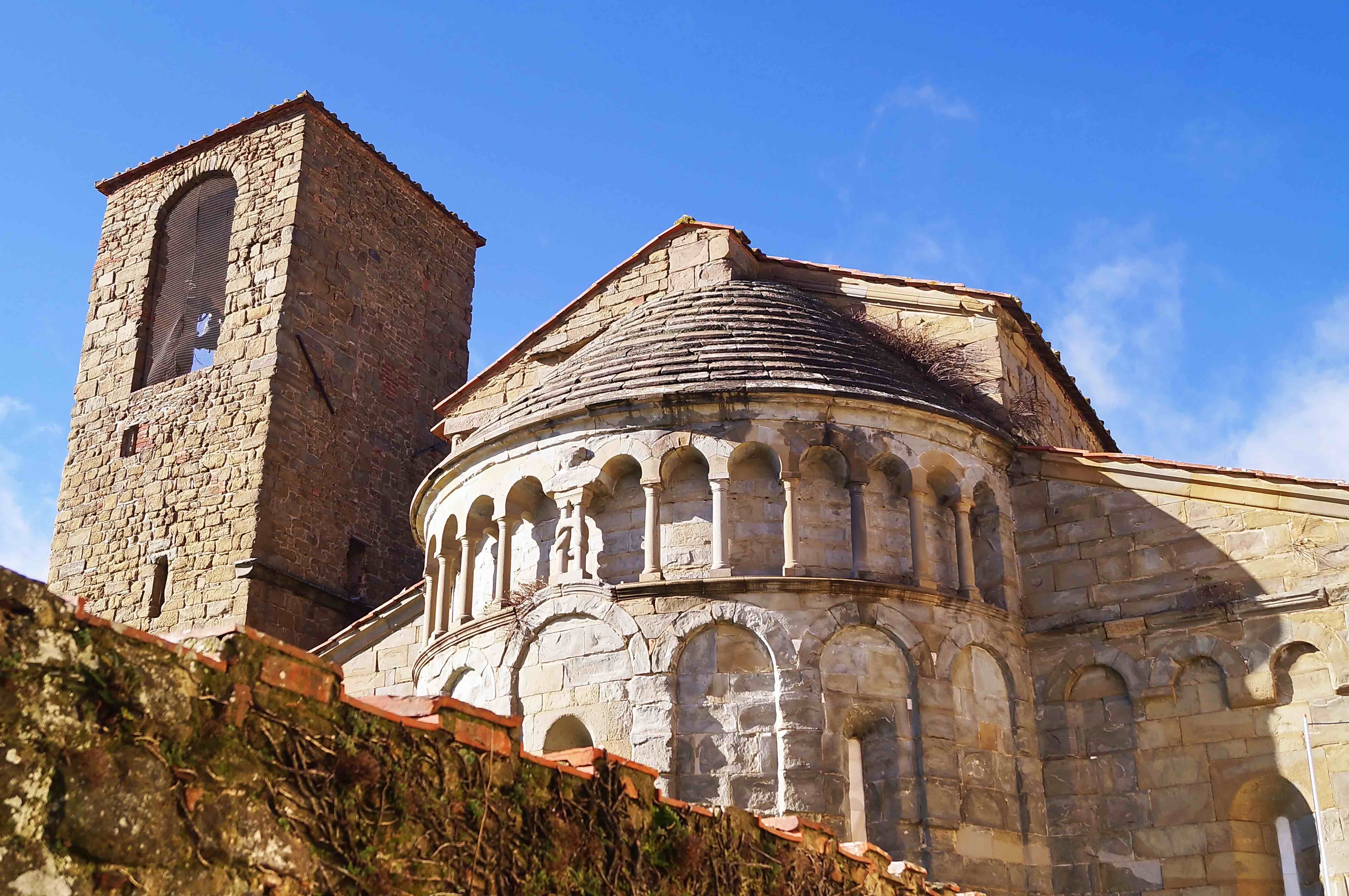
Pieve di Gropina: Romanesque church
The Chianti landscape
The first things you'll notice when you arrive in the Chianti hills are harmony, peace, and the deep connection with the land, which here wraps around and defines everything. Each twist and turn – and there are many, often on dirt roads – reveals a different scene: a village emerging from the woods, a villa glowing in the moonlight, an abbey or castle untouched by time.
Here, nature always takes centre stage: vivid, intense, and powerful, making everything else feel like a beautiful backdrop.
And humans, in this green painting called Chianti, only step in to cultivate vines and olive trees – the source of that ruby-red wine and green, robust oil that are staples on every table around here.
Chianti is meant to be discovered slowly, in harmony with its own natural rhythms. It's a dream for hikers and cyclists, who explore its hidden corners on winding, unpaved roads.
Spend your morning getting lost in the curves of this ancient, balanced world. Head north to the Florentine Chianti, visiting charming Greve and nearby Montefioralle. Or go south into the Senese Chianti, and let yourself be surrounded by vineyards on your way to Radda in Chianti, home of the Chianti Classico DOCG. Then pick the tastiest stop of the day – one of the many tables in the heart of the region.
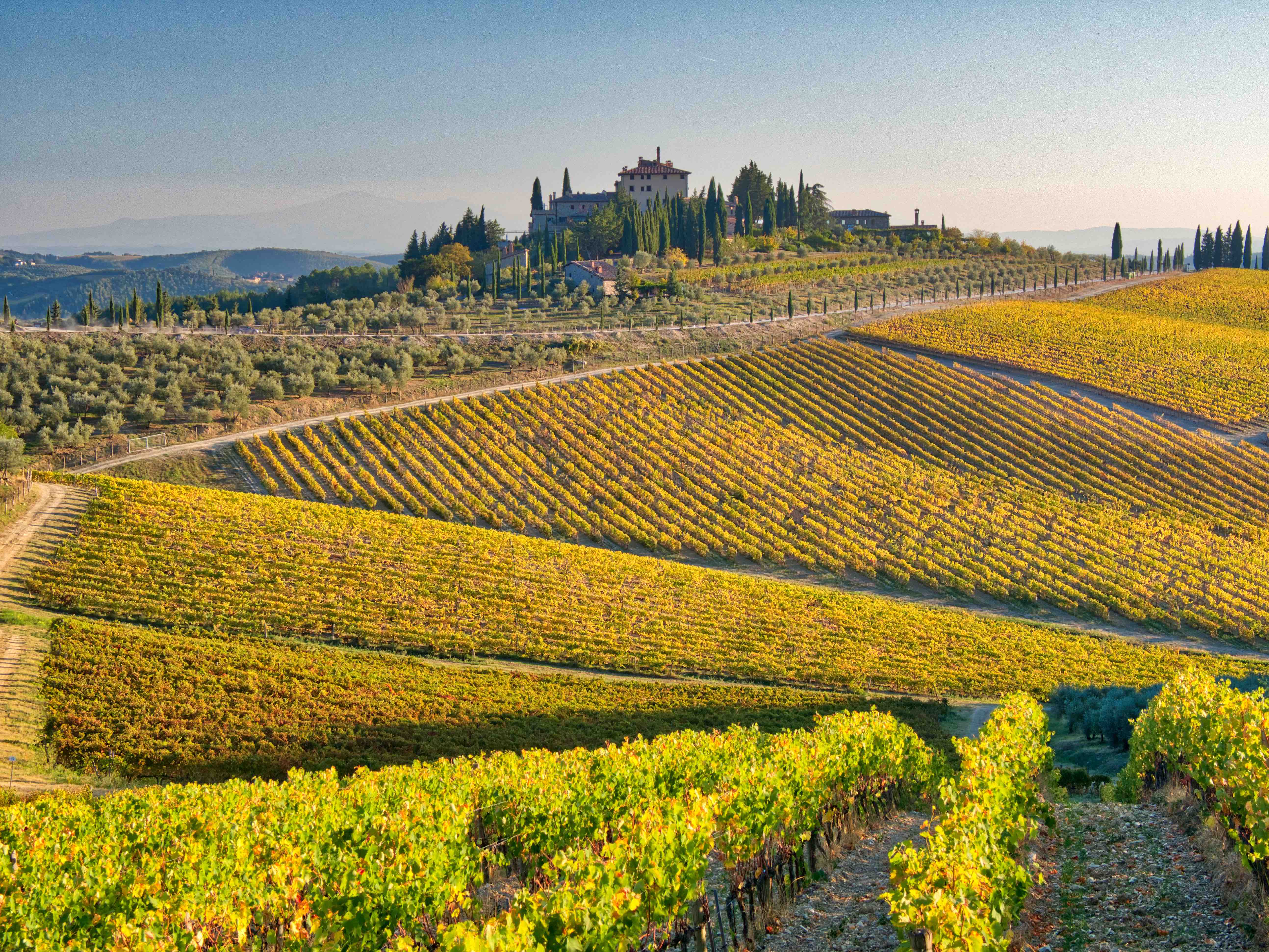
Radda in Chianti vineyards
Masterpieces of Florence
Florence is one of those must-see destinations for any traveler, thanks to its incomparable wealth of museums, basilicas, and its glorious history, which blends tradition with modernity. This city takes time to truly understand, but in one day you can visit its most important sites.
From Giotto’s frescoes to Botticelli and Leonardo’s masterpieces, from Michelangelo’s sculptures to the austere Renaissance architecture of the historic center, the impact of these works of art is immediate and captivating for anyone sensitive to the highest expressions of human creativity.
But Florence is much more than that: it's the Arno river flowing in a thousand shades at dusk, its secret gardens hidden behind imposing gates, the craftsmanship of its artisans, the skills of its chefs, and the vibrant liveliness of its people.
The key to appreciating this city, which doesn’t reveal itself at first glance, is patience: waiting in line for its vast museums, weaving through the crowds with your gaze lifted upwards as you stroll along the shaded alleys of the historic center, hopping from church to church, waiting for a lampredotto sandwich with a glass of wine, or ordering the famous Florentine steak. Or maybe finding a spot on the steps of Piazzale Michelangelo at sunset, when the sun bathes the Duomo, Palazzo Vecchio, the Uffizi, and Ponte Vecchio in warm shades of red, offering an unusual yet unforgettable perspective of the city.
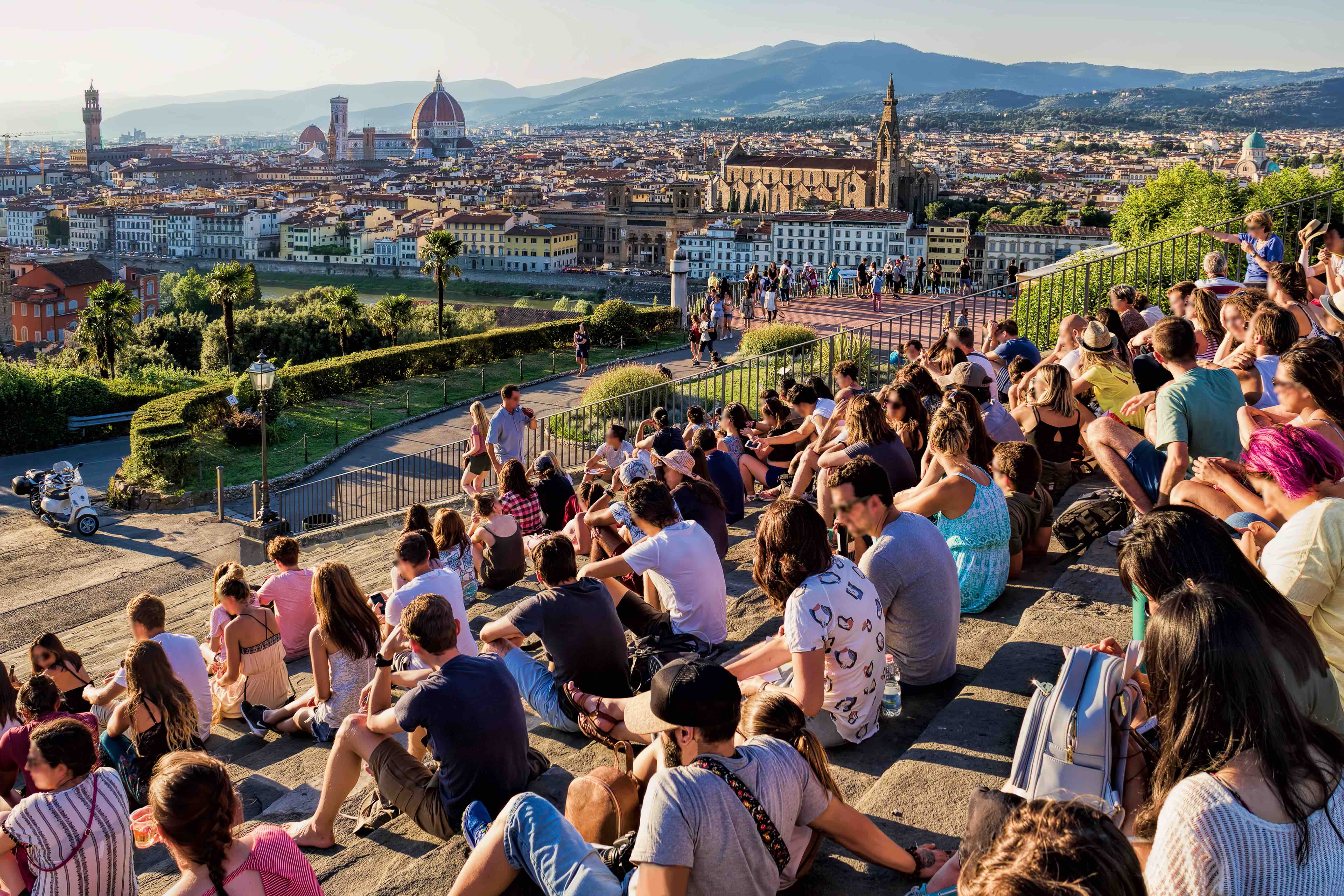
Piazzale Michelangelo in Florence


